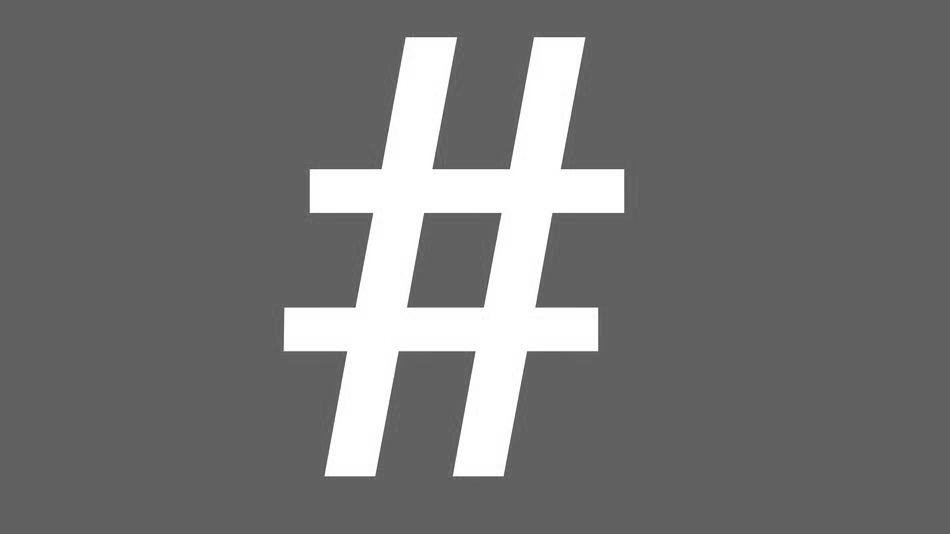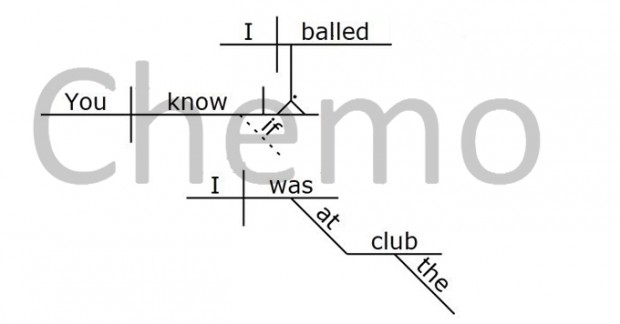
One major obstacle prevents me from diagramming my favorite tweets so as to admire their structure: I don’t know what to do with the hashtags. How do I begin to approach, for example, the unsubtle irony of “#RIPNelsonMandela shawshank redemptionis my favourite movie”? Or the bewildering complexity of Lindsay Lohan’s “i love all of you… #mylittlestars “a night without freckles is like a night without stars**””? I feel like I could write an entire treatise documenting the humor of @NotCoatFactory (née @BurlCoatFactory)’s use of the #coat hashtag, but I’m not sure where to begin with their ambiguous structure.
#RIPNelsonMandela shawshank redemptionis my favourite movie
— AdeleAdjchkawla (@AdeleAdjchkawla) December 5, 2013
i love all of you… #mylittlestars “a night without freckles is like a night without stars**”
— Lindsay Lohan (@lindsaylohan) September 7, 2012
This frustration is not limited to Twitter, though, as rap lyrics are adopting the syntax of tweets more and more frequently. Instead of limiting themselves to the similes that had become as clever and prevalent as those in Petrarchan sonnets, as with Lil Wayne’s “Bitch, / real G’s move in silence like lasagna,” rappers like Kanye West, Drake, and Big Sean have begun to remove the connective material altogether in what is known as hashtag rap. With lyrics as with tweets, the connection between the sentence and the hashtag can take almost any form ((A good introduction to this new kind of grammar can be found here.)). A hashtag can signify a mood, setting, or affect (Lena Dunham: “I feel like Beyonce is having a very different experience of short hair than I am #bowdown”), some sort of metonymic connection (Big Sean, repeatedly: “Used to the bottom—scuba / So I’m on the grind—skateboard or scoota, / ‘Till I am the king of my castle—Koopa”), or can gesture towards an irony that undermines or reverses the content of the sentence content altogether (see: #RIPNelsonMandela). So when Drake raps “I could teach you how to speak my language, / Rosetta Stone,” the listener can only be left to imagine a silent hashtag, and to ponder the relevance herself.
I feel like Beyonce is having a very different experience of short hair than I am #bowdown
— Lena Dunham (@lenadunham) August 8, 2013
This sort of inferential understanding isn’t enough for me. Damn it, when I hear Beyonce sing:
I’m all up under him like it’s cold / winter time
All up in the kitchen in my heels / dinner time
I want to understand and glory in just what she is saying and how she is saying it. So, to do the internet a favor, I have outlined a few possibilities for approaching the hashtagged phrases we all know and love.
My first instinct is to float the relevant #hashtag either above or below the diagram itself, as something of a spectre haunting the sentence from above, or lurking below. I even thought that the position could change based on the relationship the hashtag has to the sentence… is it elucidation? Go up. Irony? Down. Irony would be down, right? Let’s start with something straightforward from the Bieb: “The most recent rumors might be the funniest of all. Where do u get this stuff??? #focusedonreality”.
The most recent rumors might be the funniest of all. Where do u get this stuff??? #focusedonreality
— Justin Bieber (@justinbieber) August 5, 2013

This seems a bit too conventional for my tastes, though; after all, the hashtag became useful because of the metacommentary that it provides, as well as the technological interface that it navigates. Perhaps, then, the hashtag would work as roll-over metadata? After all, webcomics like xkcd take advantage of this function to great effect…

But this seems to diminish the role of the hashtag. Is #RayCharles nothing more than metadata, observable only to those who linger? Perhaps this is an accurate representation of what the hashtag originally was—as referential material pointing outside the text—but no longer. Or, rather, no longer only that; the hashtag points outward to other tags but also inward to the tweet’s mood, or reference, or content: its essence. The hashtag haunts the tweet, so I tried to make the hashtag into a spectre haunting the diagram, as in this Drake lyric:

The haunting presence of the hashtag here sums up my feelings about this line. It also reminds me of Derrida, of course. In Spectres of Marx, he goes to great length to describe how commodification, the use-value of a thing, haunts all objects:
Transcendence, the movement of super-, the step beyond (über, epekeina), is made sensuous in that very excess. It renders the non-sensuous sensuous…. The commodity thus haunts the thing, its spectre is at work in use-value.
So it also is with the hashtag, which turns the tweet outward and beyond, becoming more than it is. It seems clear to me that Derrida was actually talking about hashtags and tweets.
✖

